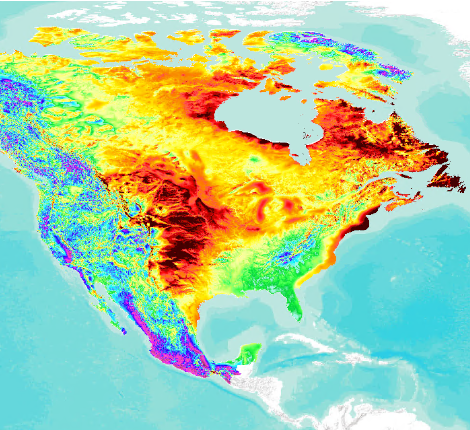New 2024 North American Wind Maps
October 7, 2024

UL Launches New 2024 North American Wind Maps in Windnavigator Software
UL has just released the 2024 North American wind maps on its Windnavigator platform, a significant milestone for wind resource analysis and project development in North America. This update expands Windnavigator’s, originally released more than 12 years ago, capabilities with features tailored for the North American market. The new wind maps not only provide more accurate data and at higher heights (up to 300 m), but also leverage the latest advancements in wind modeling technology, offering enhanced insights for developers and operators.
Key Highlights of the 2024 North American Wind Map Launch:
Expanded Met Mast Data Coverage
An integral part of our wind mapping involves adjusting the wind speed map to as many wind observations as possible ( Granted UL Solutions gets the permission from clients to use their proprietary data.) . This is a critical aspect of our wind speed maps and the recipe for achieving high accuracy. To further enhance the accuracy of our map, we relied on almost 5000 observations for both the US and Canada, with some additional met data in Mexico. UL’s wind database contains 2.5 times more observations than our original map in Windnavigator. This expanded dataset allows us to select observations with longer period of records and higher measurement heights to be used in adjusting the wind speed map. It ensures a broader and more representative understanding of the wind resource across North America, providing developers with crucial historical and current observations that reduces uncertainty in project planning.
Enhanced Wind Map Heights
The new North American maps are available at several heights ranging from 10 m to 300 m above ground level. This is a welcome improvement to our original maps which were limited to 140 m height. Given the additional heights, the new maps are especially useful for projects involving taller wind turbines, which are becoming the norm for modern wind farms.Improved Wind Modeling and Accuracy
The coupled mesoscale-microscale modeling system was upgraded to take advantage of new developments in mesoscale modeling and reanalysis datasets. UL’s wind modeling system relies on the Weather Research and Forecasting (WRF) mesoscale model and the fifth generation ERA5 reanalysis dataset. The 2024 North America maps reflect a notable improvement in wind speeds due to the sheer amount of met data available and the upgraded modeling system based on the WRF mesoscale model and the ERA5 reanalysis. These refinements provide a better representation of wind patterns and reduce the margin of error in wind speed estimations.Critical Tool for Greenfield Prospecting
One of the primary use cases of Windnavigator’s new North American map is greenfield prospecting. For developers looking to identify the best locations for future wind projects where measurement data may not yet be available, these maps should serve as a trusted and practical wind prospecting tool. The 2024 update reduces the uncertainty with early-stage project development, helping developers lower overall project costs by providing more accurate wind speed predictions and site conditions.Should you have any inquiries, proposals, or simply an interest in exploring our digital solutions, we warmly invite you to reach out to us.